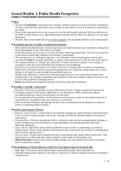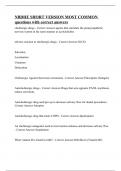Samenvatting
Sexual Health: A Public Health Perspective Summary ()
- Instelling
- Vrije Universiteit Amsterdam (VU)
This summary includes all the chapters of the book "Sexual Health: A Public Health Perspective". Note that not all activities of the book and their feedback are discussed, as well as some figures in the book. This is due to the fact that the exam for my course (Sexual Health: Threats and Opportunit...
[Meer zien]














